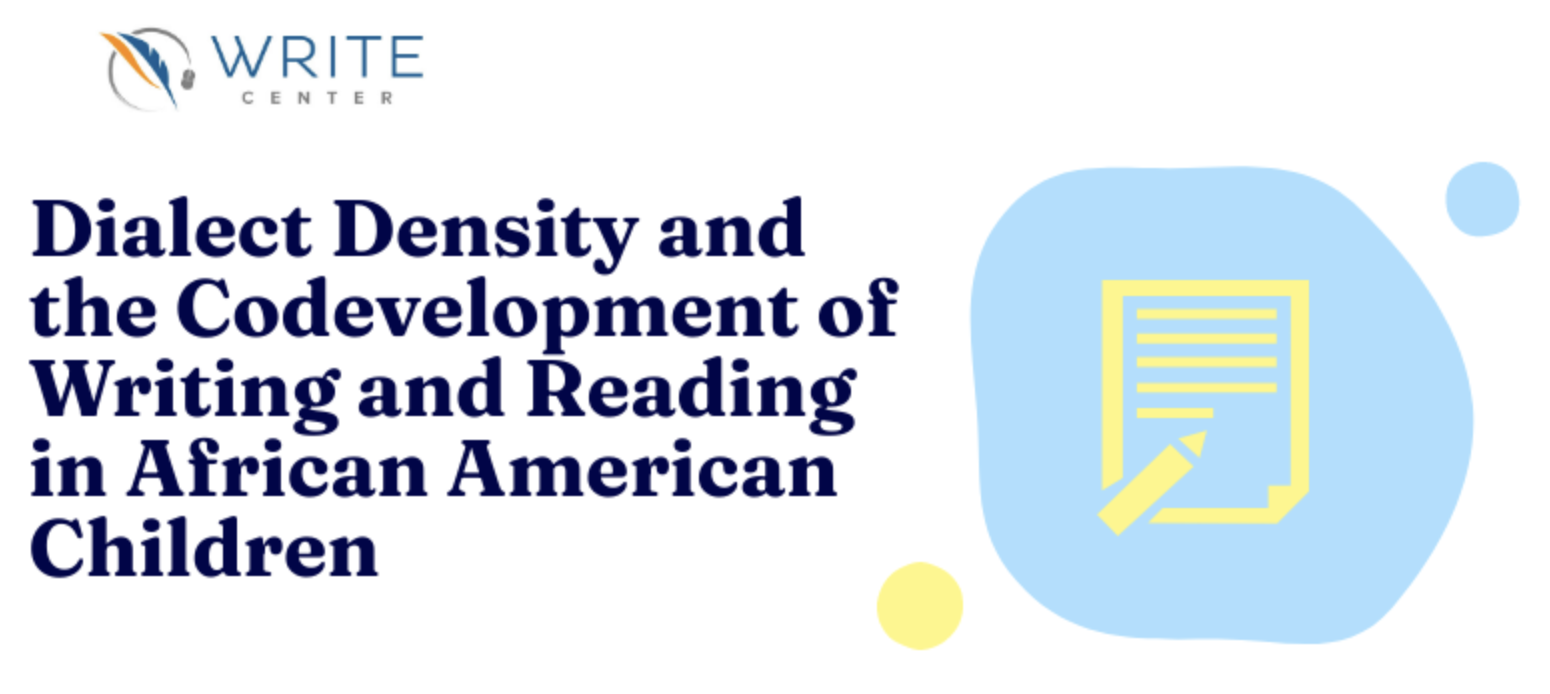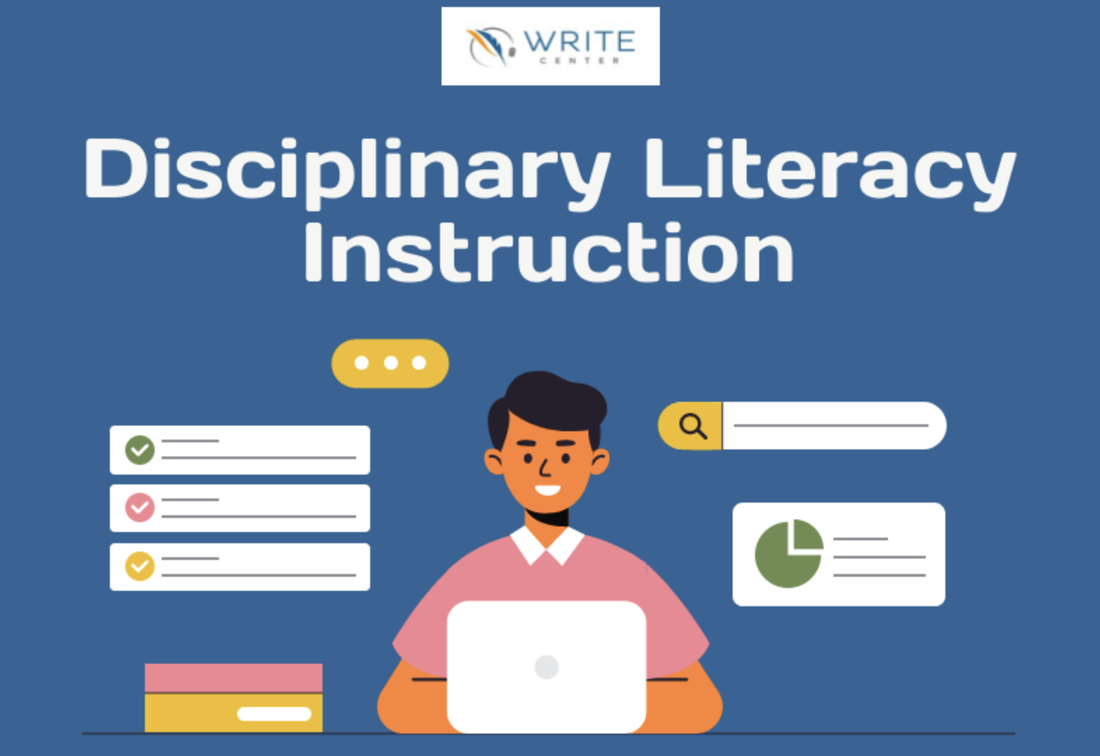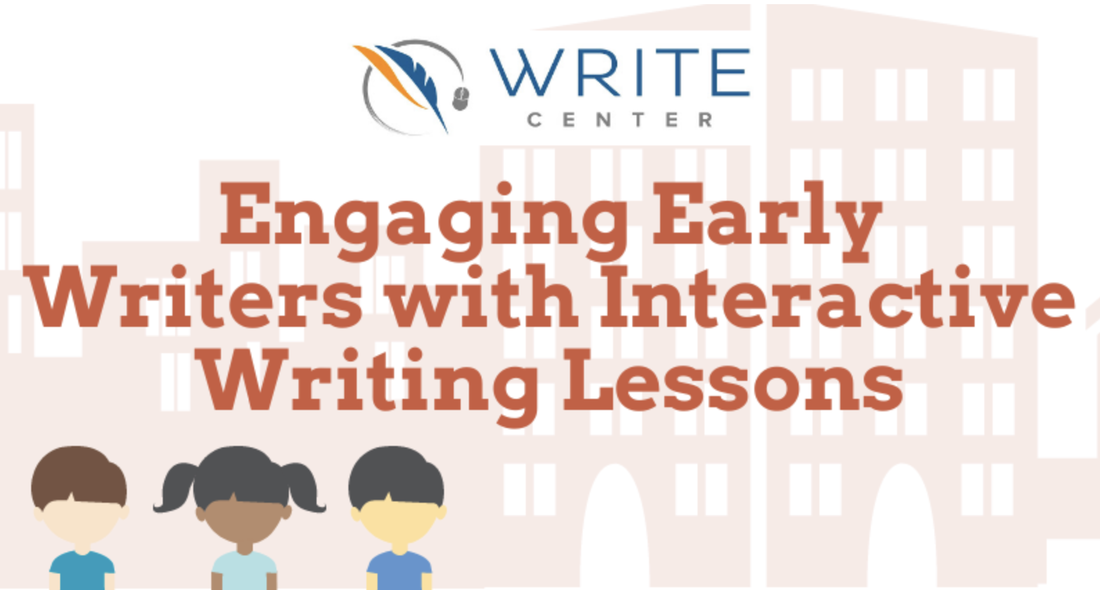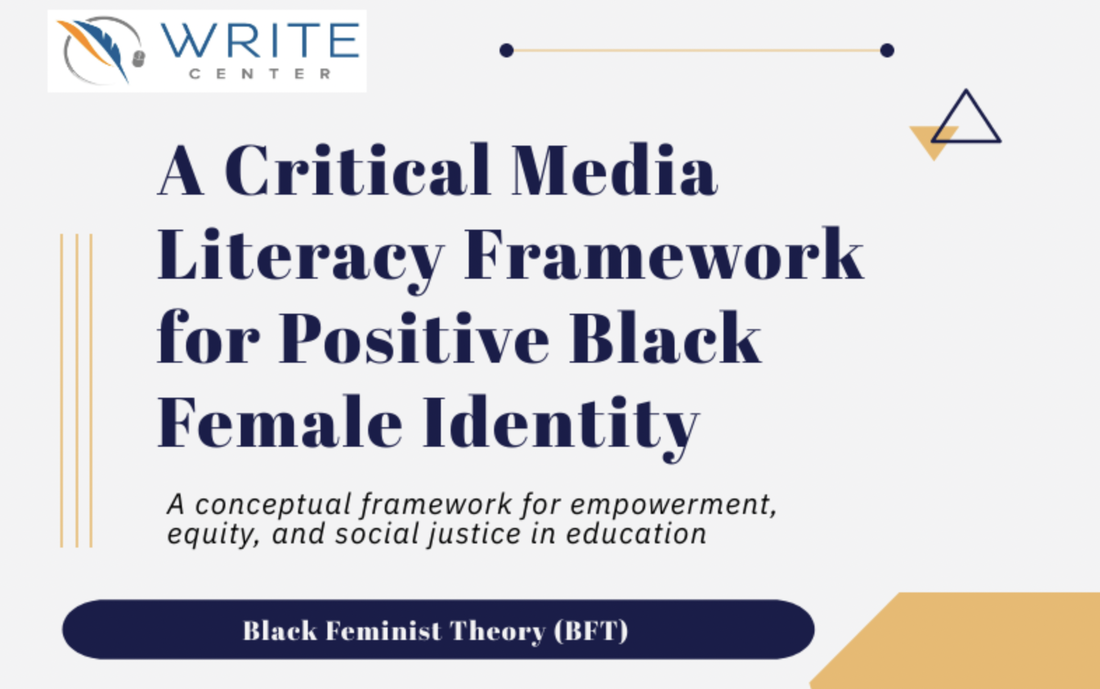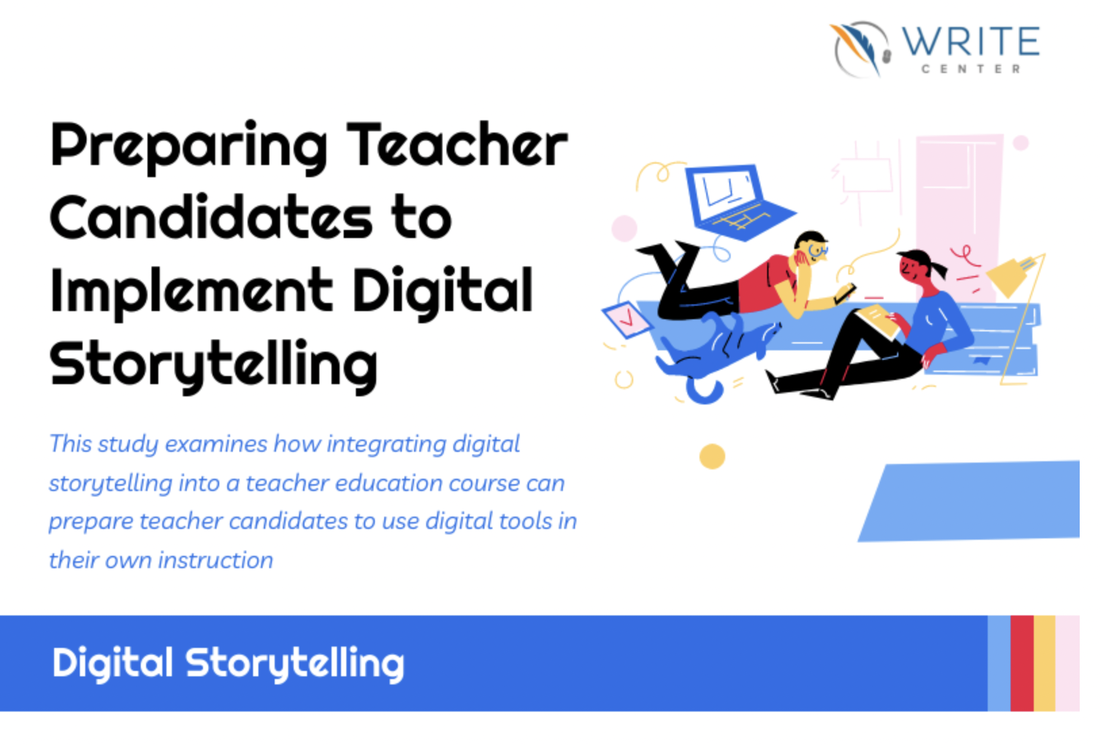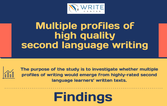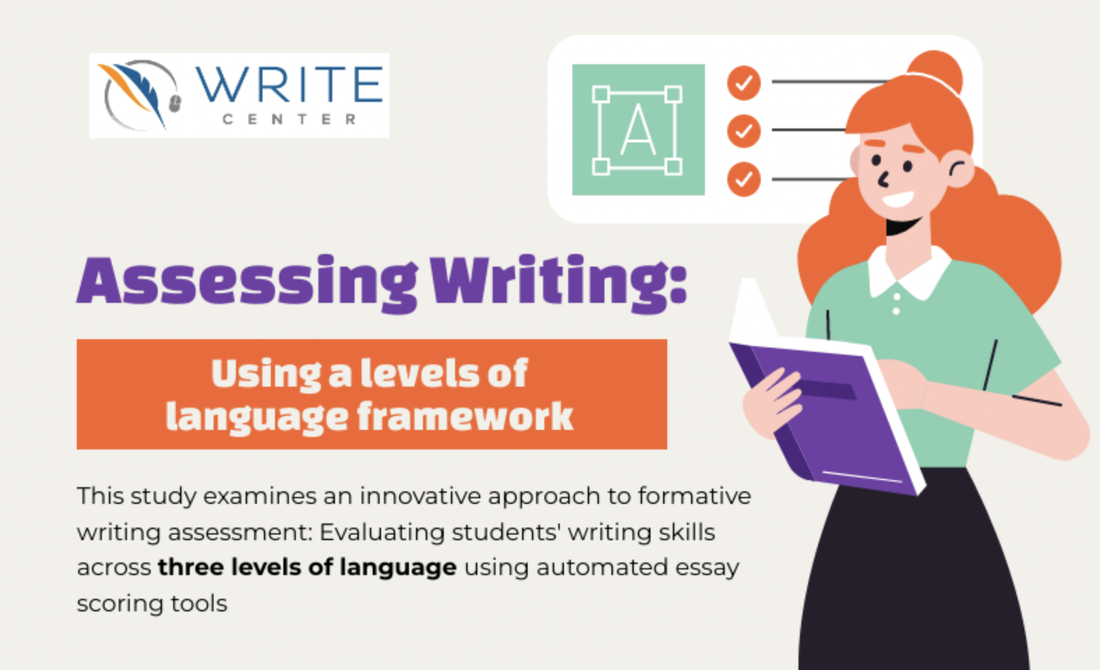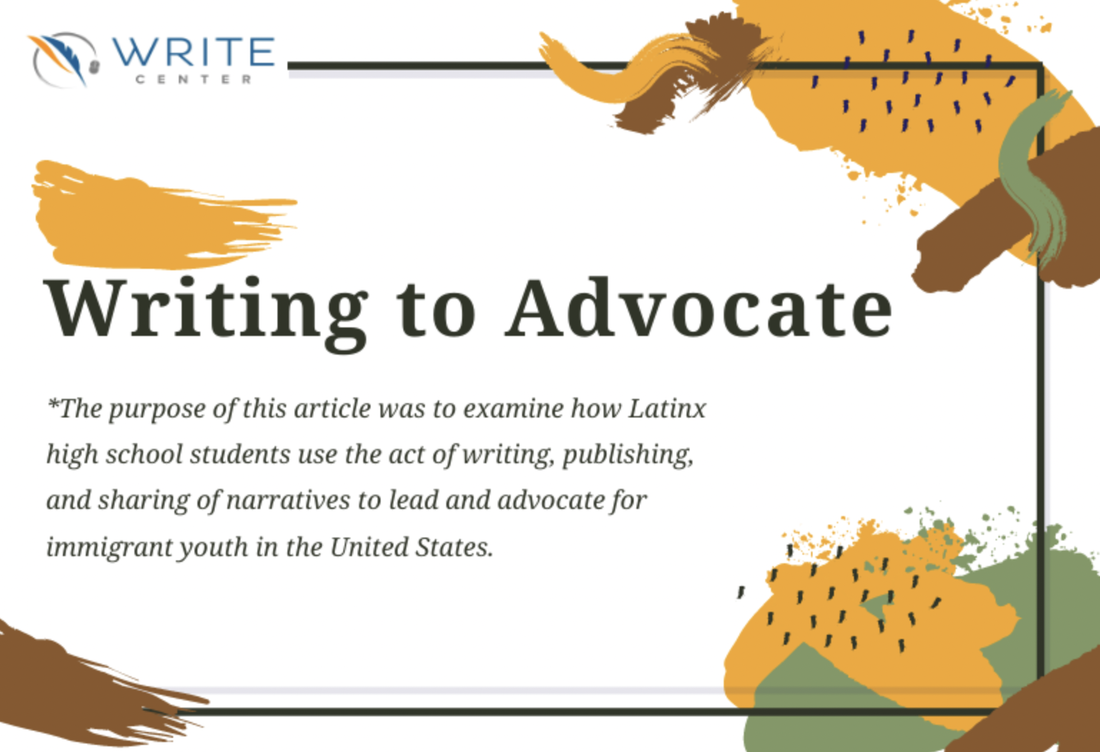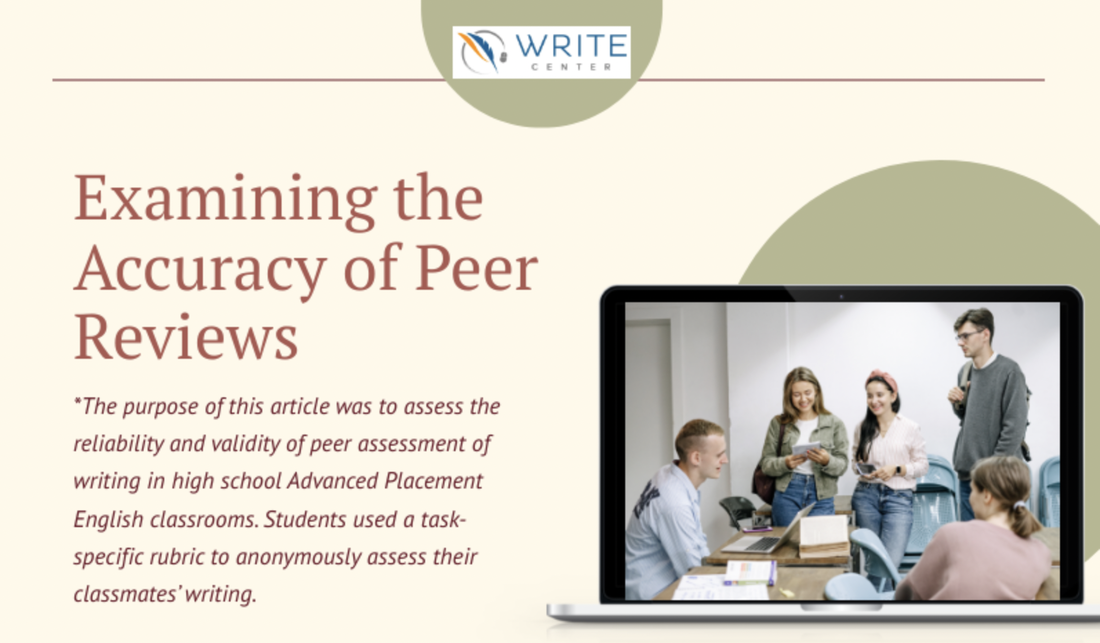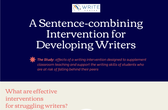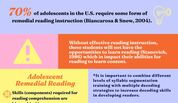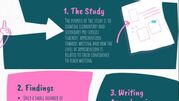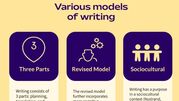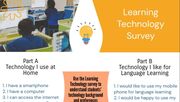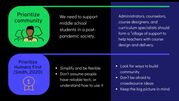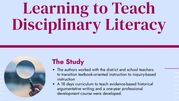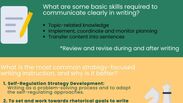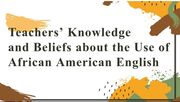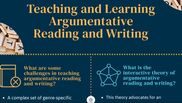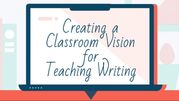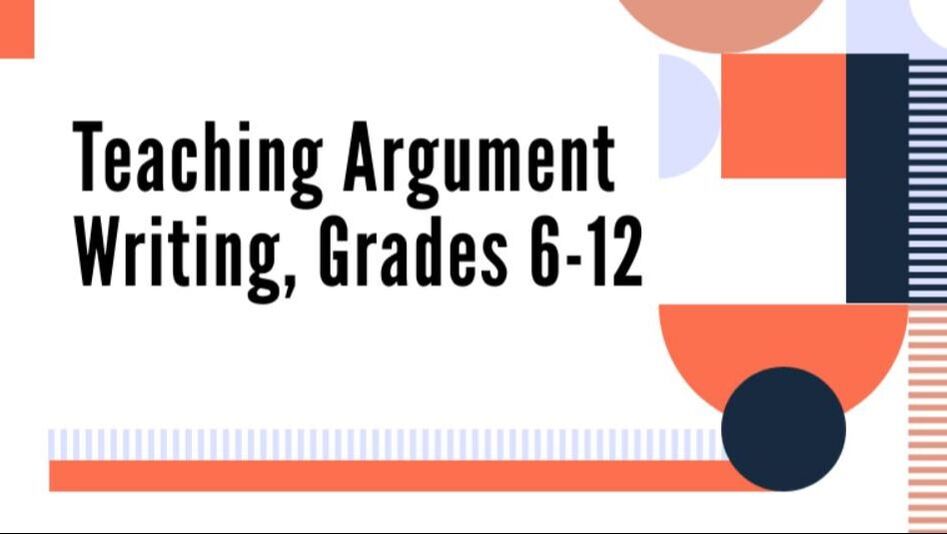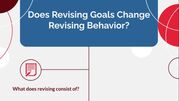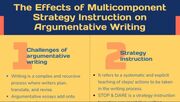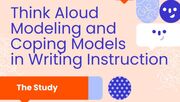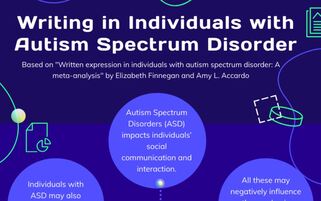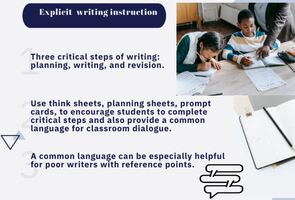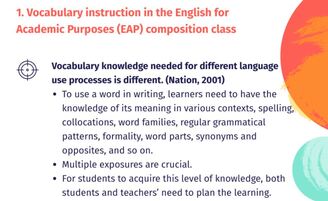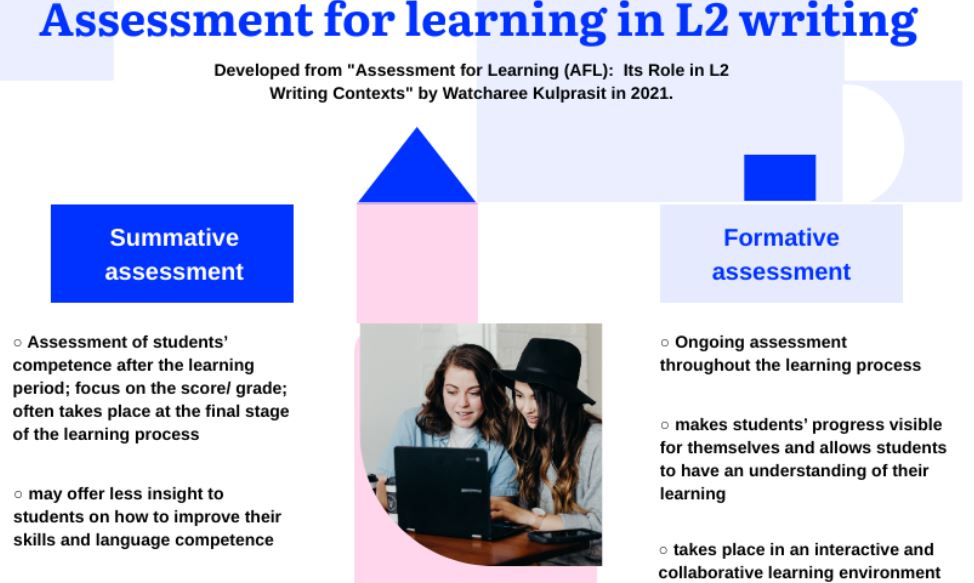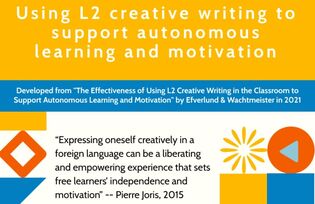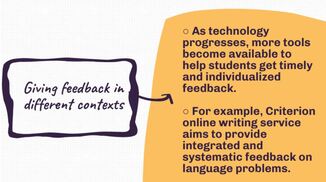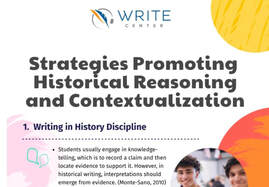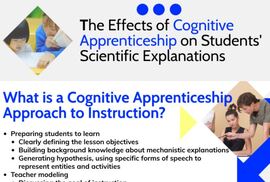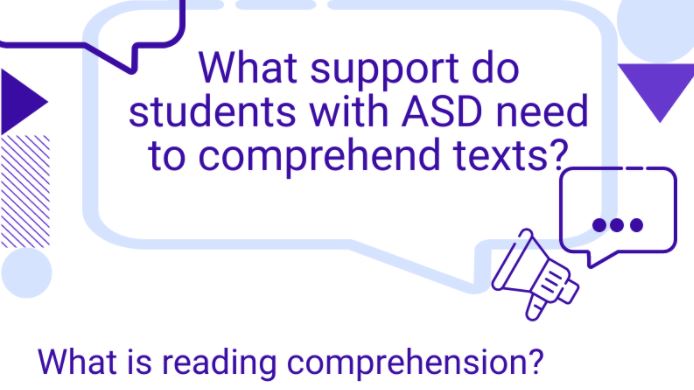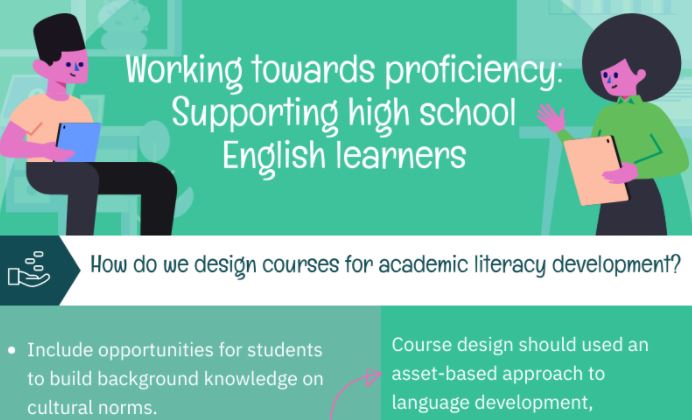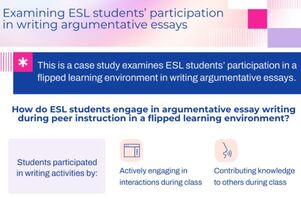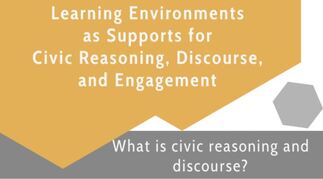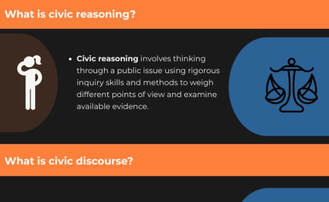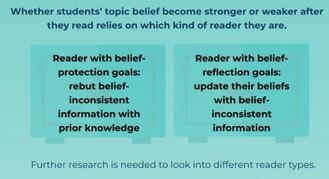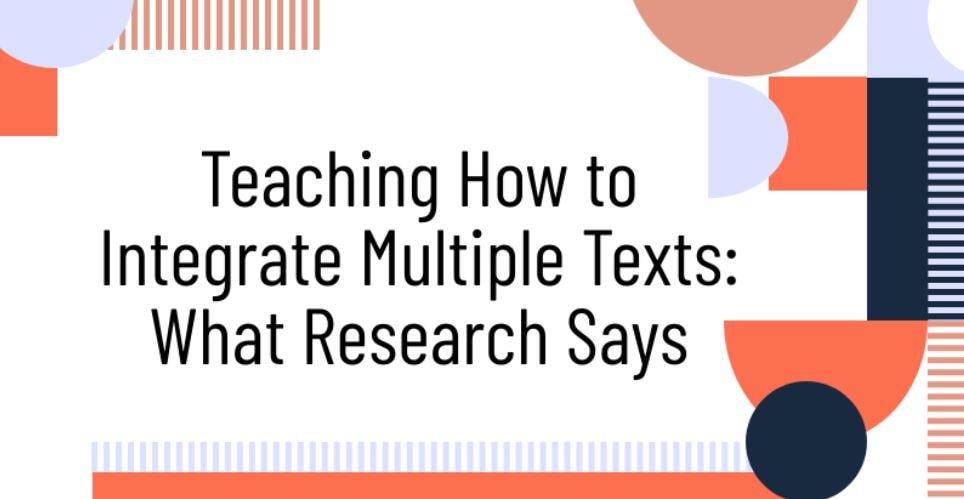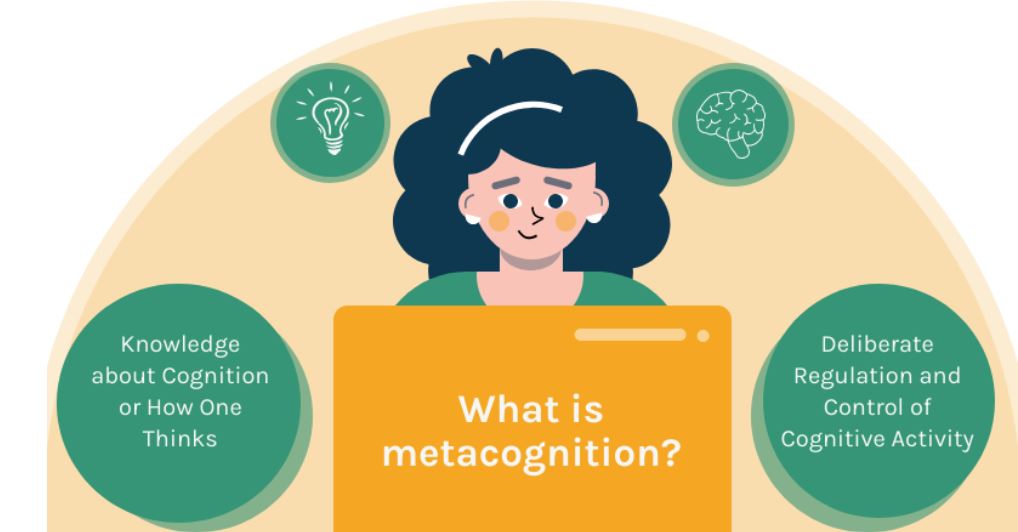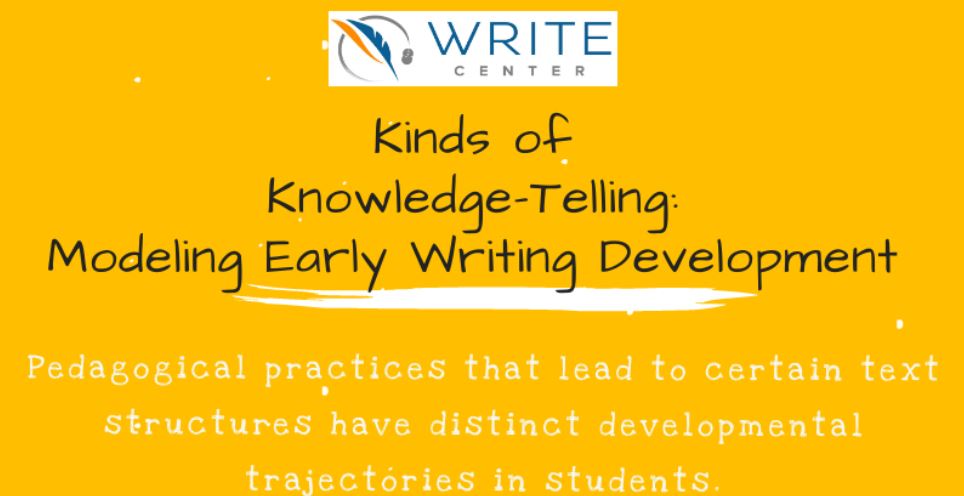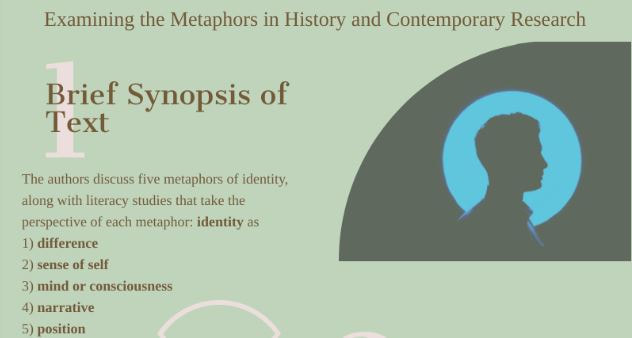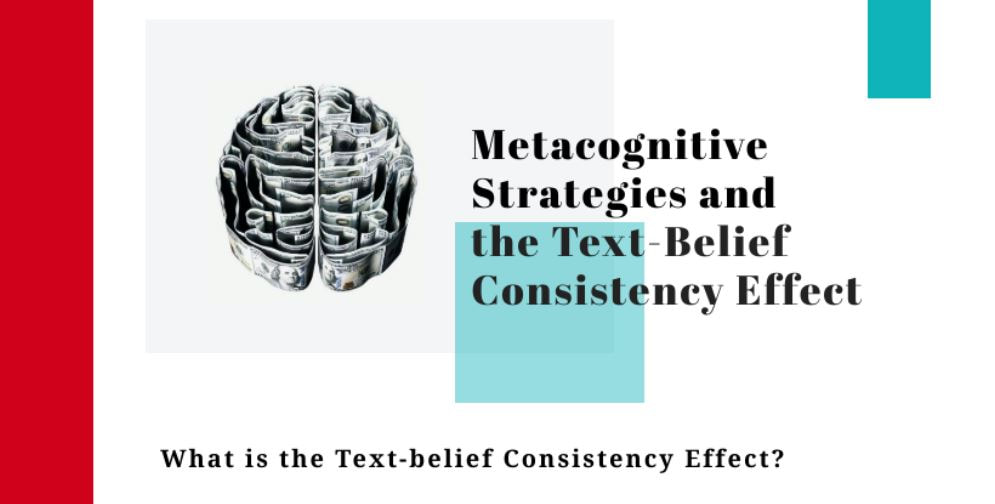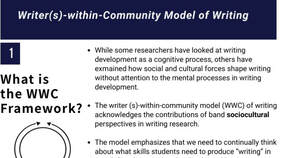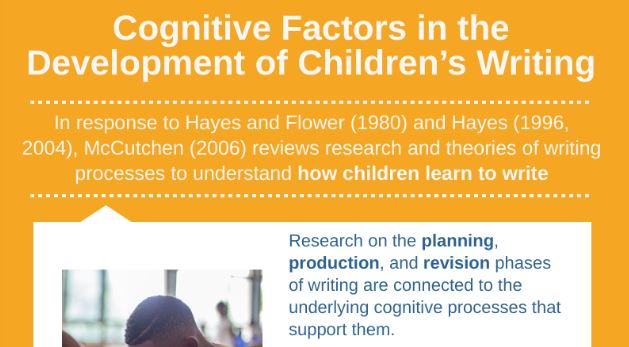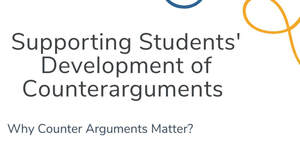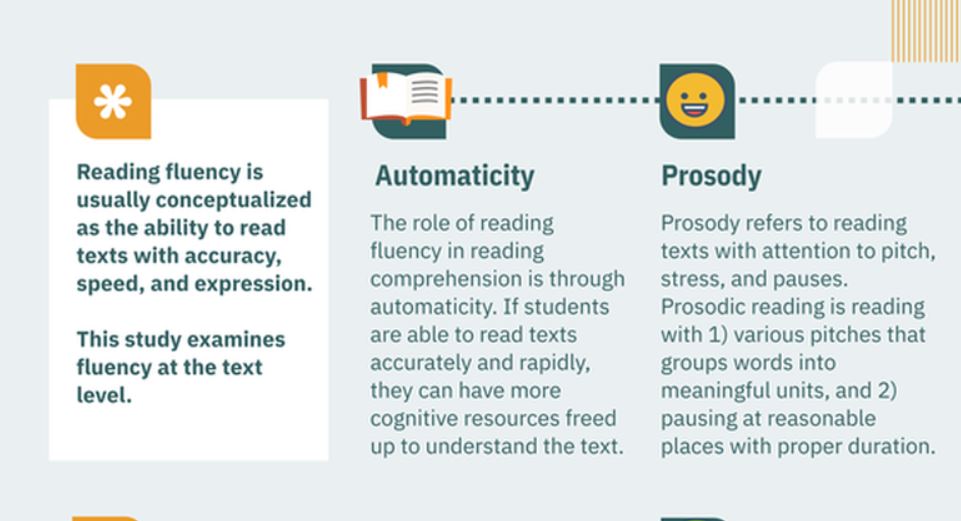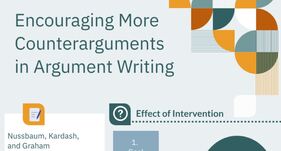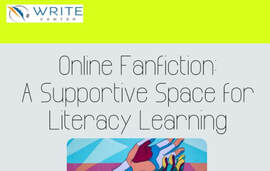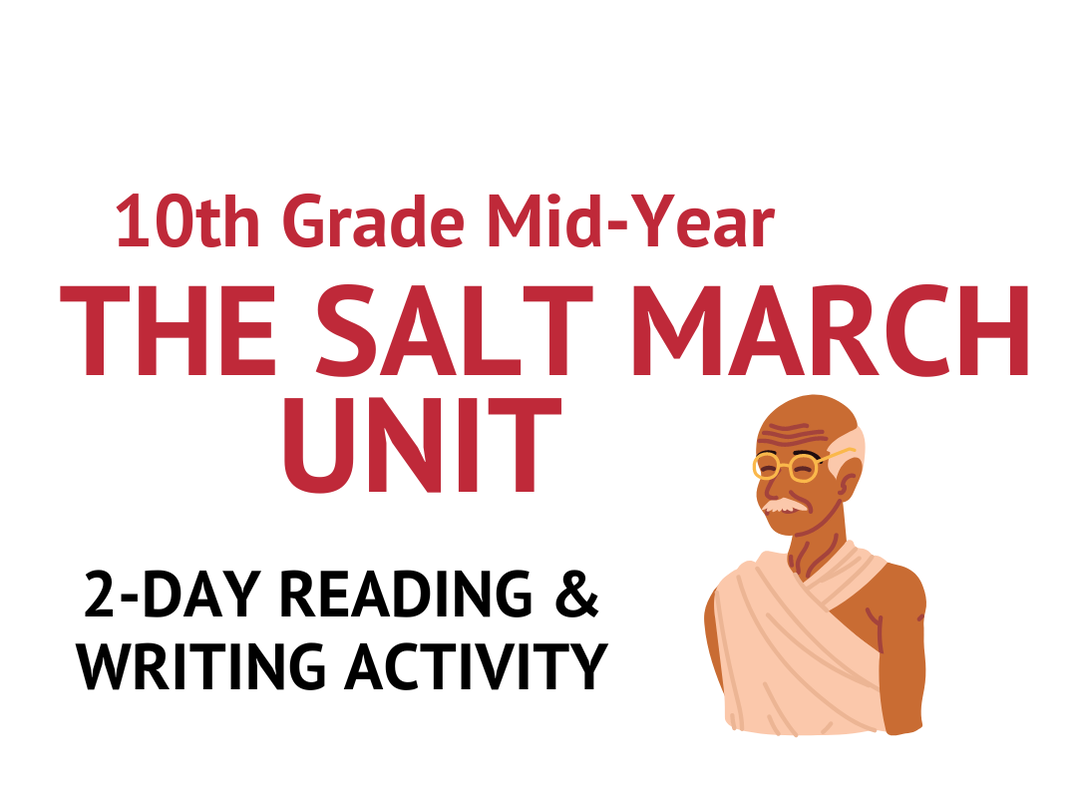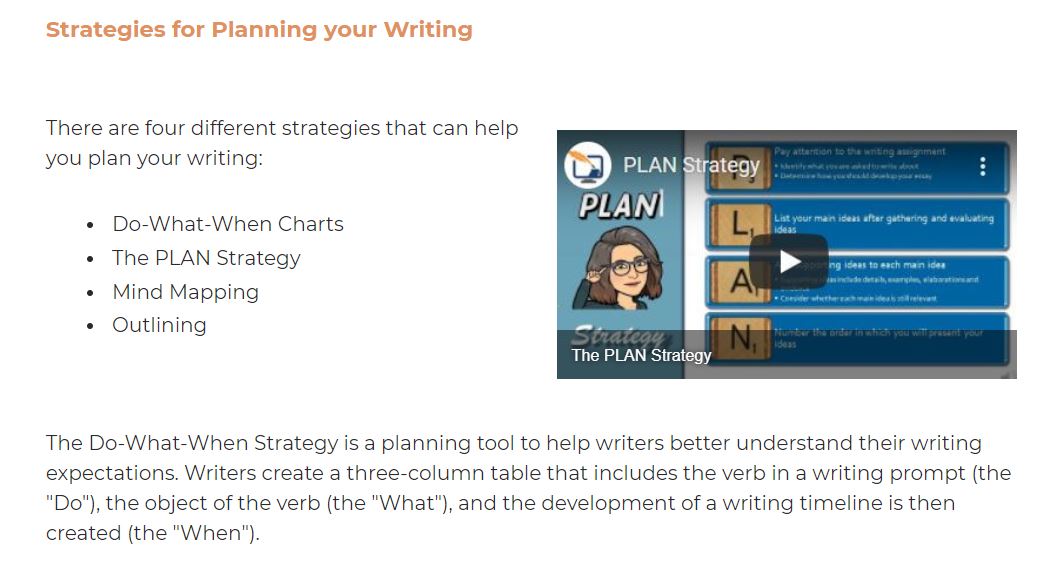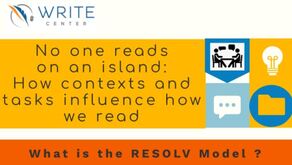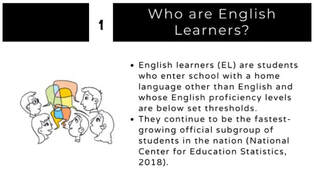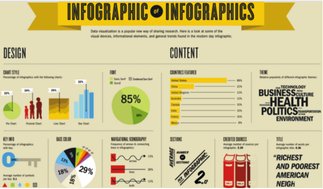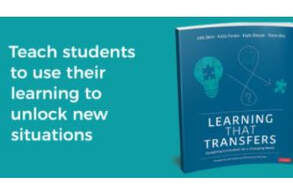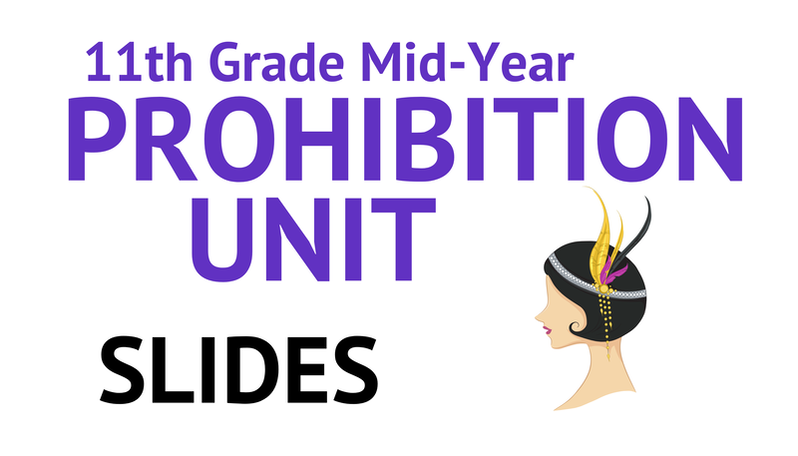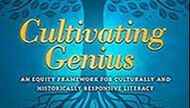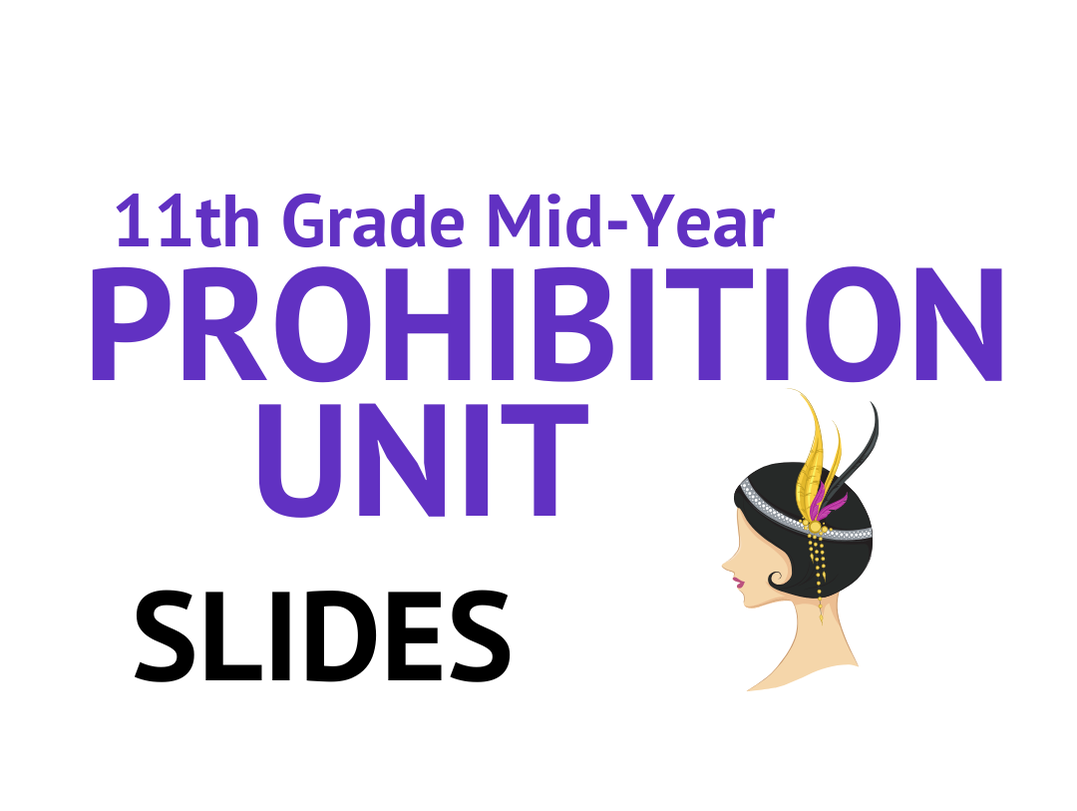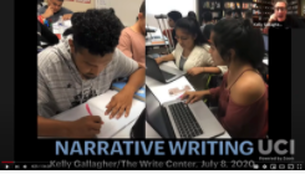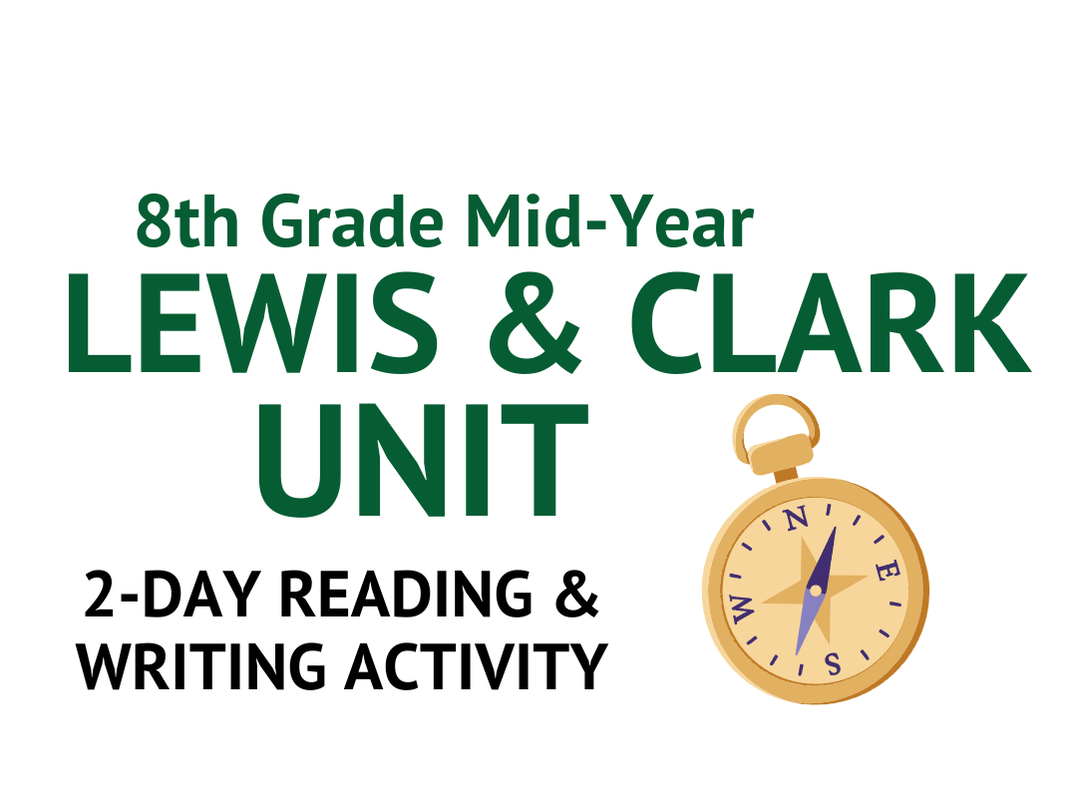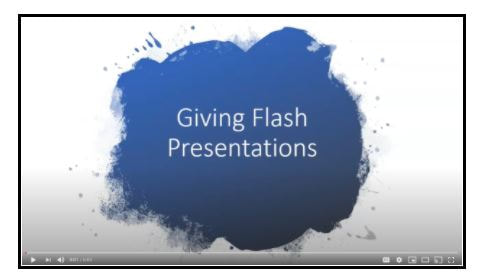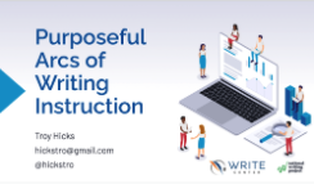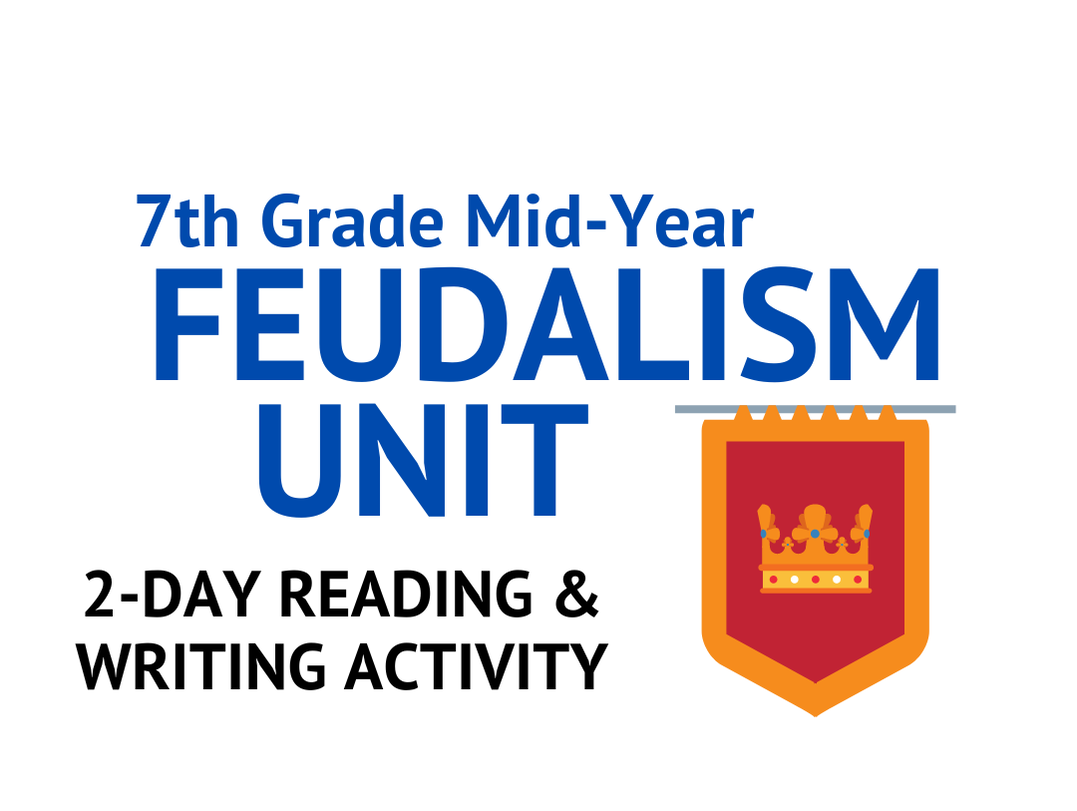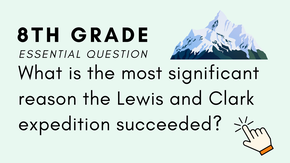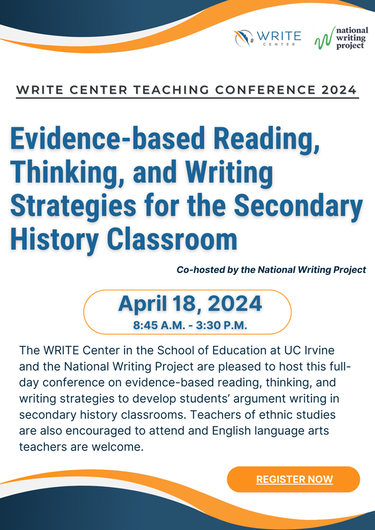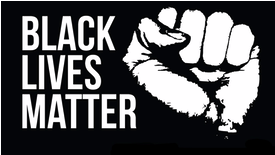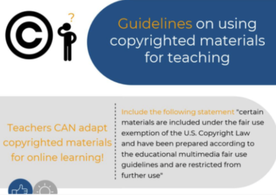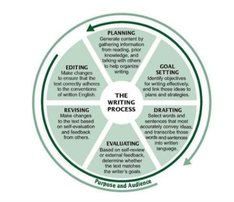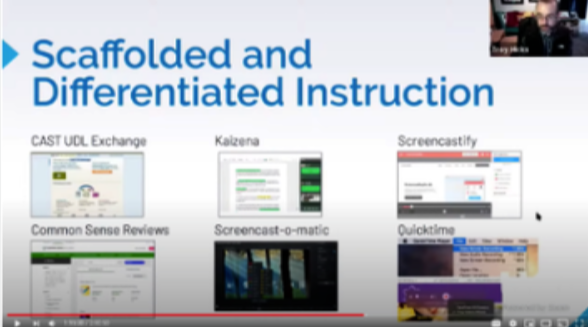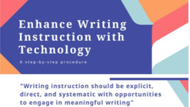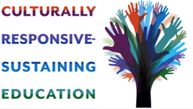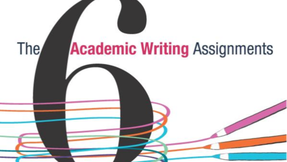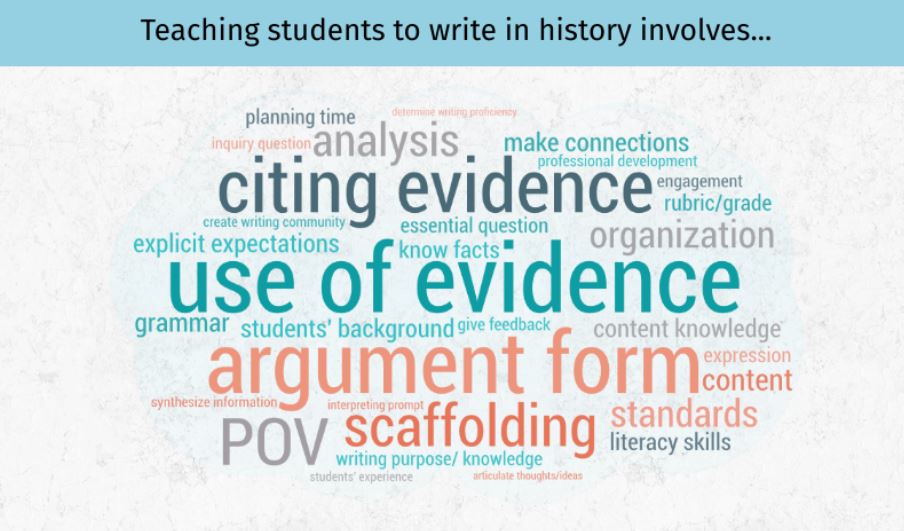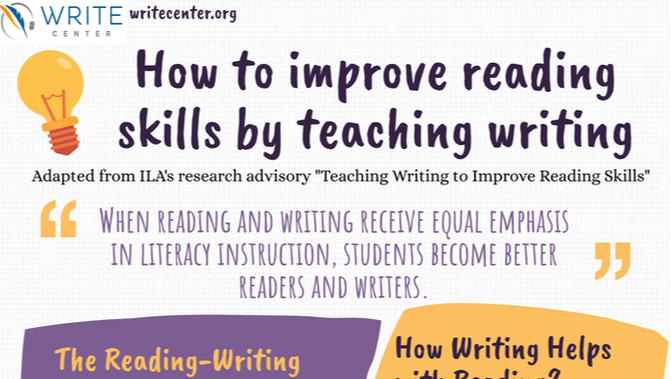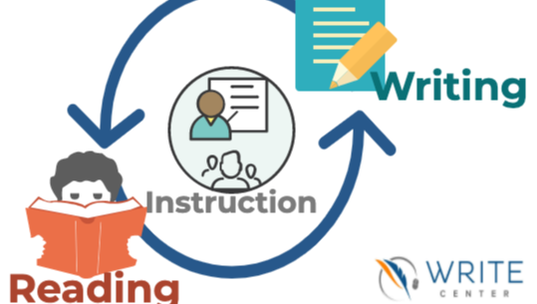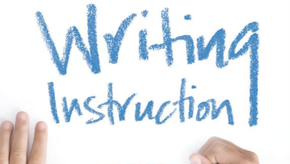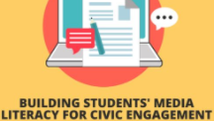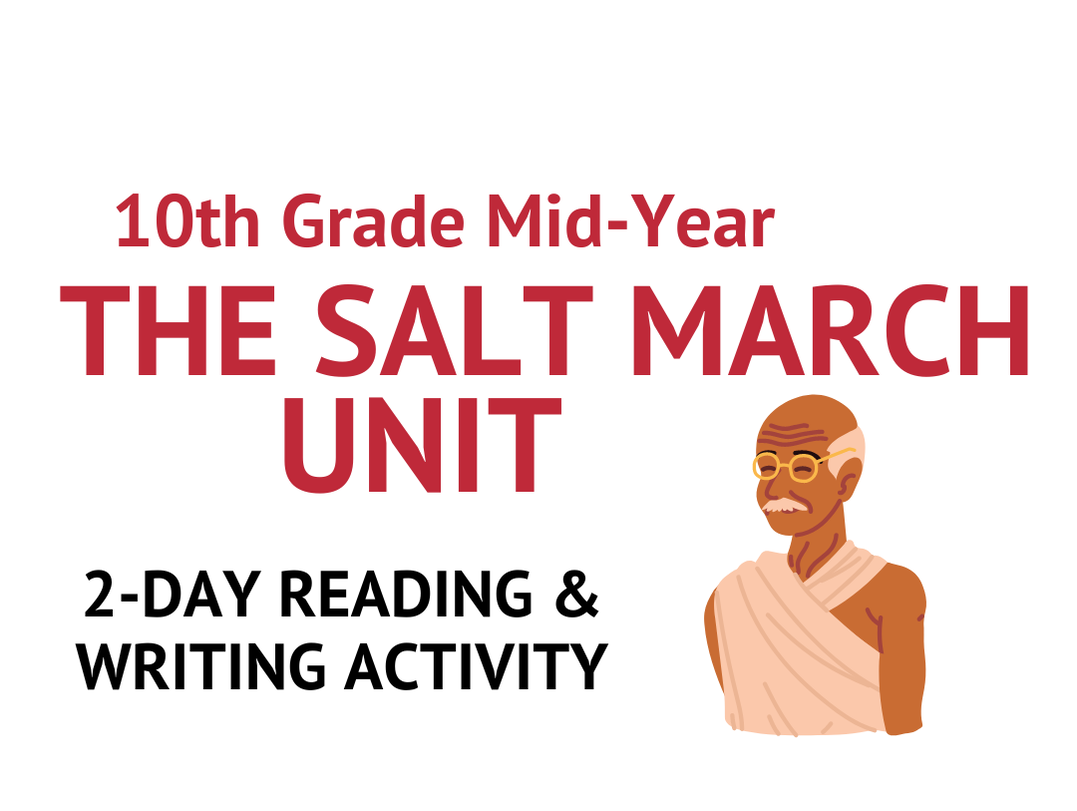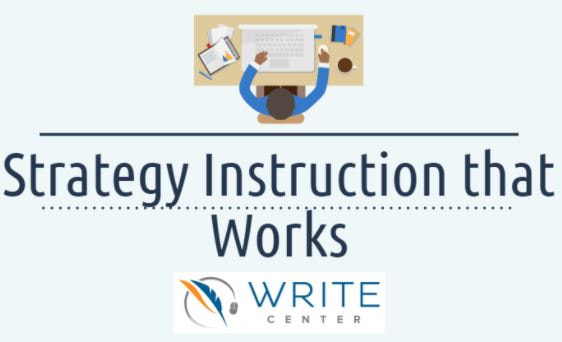B L O G
B L O G
Tips, tools, and strategies for teaching, writing, online learning, career development, and more. Explore our academic articles and infographics.
Vertical Divider
|
Guest Bloggers
ARCHIVES
September 2023 August 2023 July 2023 June 2023 May 2023 April 2023 March 2023 February 2023 January 2023 December 2022 November 2022 October 2022 September 2022 August 2022 July 2022 June 2022 May 2022 April 2022 March 2022 February 2022 January 2022 December 2021 November 2021 October 2021 September 2021 August 2021 July 2021 June 2021 May 2021 April 2021 March 2021 February 2021 January 2021 December 2020 November 2020 October 2020 September 2020 August 2020 July 2020 June 2020 May 2020 April 2020 March 2020 February 2020 January 2020 November 2019 October 2019 September 2019 August 2019 |
|
The Effects of Cognitive Apprenticeship on Students' Scientific Explanations
By Minkyung Cho and Sasha Stone What is cognitive apprenticeship approach to instruction? Preparing students to learn starts by clearly defining the lesson objectives and building... |
|
Guest Blog: Making Someone Wrong
By Jennifer Fletcher Pick a side and prove the other side wrong. In a nutshell, this is what many argument prompts tell students to do. But "making someone wrong"- that is... |
|
An Explicit Vocabulary Instruction Model
By Jiali Wang and Jazmin Cruz Can the contextualized word family (CWF) vocabulary instruction model effectively improve students' vocabulary size and writing performance? Vocabulary learning for second language... |
|
What support do students with ASD need to comprehend texts?
By Jiali Wang and Jazmin Cruz What is reading comprehension? Comprehension is a process of creating a mental representation from text by using a range of skills like inference-making, comprehension monitoring, and perspective taking... |
|
Guest Blog: Black Linguistic Justice in the Classroom
By Alejandro Granados Vargas "Ain't is not a word." This is the mantra one of my teachers made us verbally repeat out loud in my early elementary years. Every repetition was supposed to burn it into our memories and turn it from a a sentence... |
|
Working towards proficiency: Supporting high school English learners
By Undraa Maamuujav and Jazmin Cruz How do we design courses for academic literacy development? Courses should include opportunities for students to build background knowledge on cultural norms... |
|
Using peer feedback in the ESL writing class
By Jiali Wang and Jazmin Cruz What are the pros and cons of peer feedback? With peer feedback, students learn to be critical readers and revisers of their writing. Students can also have a higher level of possession of their texts... |
|
Peer instruction in a flipped environment: Examining ESL students' participation in writing argumentative essay
By Jiali Wang and Jazmin Cruz How do ESL students engage in argumentative essay writing during peer instruction in a flipped learning environment? This case study examines ESL students' participation in a flipped learning environment... |
|
Embracing a Critical Translingual Approach
By Jenell Krishnan and Sasha Stone To make language learning experiences in the U.S. transformative, a comprehensive approach that is able to address the marginalization of minoritized communities should be adopted... |
2021
|
Learning Environments as Supports for Civic Reasoning, Discourse, and Engagement
By Jacob Steiss and Sasha Stone What is civic reasoning and discourse? Civic reasoning includes the knowledge and skills needed for democratically healthy thinking, such as inquiry, fact-finding, rationality, critical thinking, discussion, and... |
|
Historical Writing Instruction: A Comparative Case Study
By Youngsun Moon and Sasha Stone What are the differences in history thinking and writing instructions across teachers? What instruction styles help students develop historical thinking and writing?... |
|
What is Myside Bias?
By Youngsun Moon and Sasha Stone What is myside bias? Myside bias is when we agree or disagree with an argument in a biased manner towards one's own prior beliefs and opinions. How can we help students avoid myside bias?... |
|
Supporting Students' Civic Reasoning and Discourse Skills
By Tamara Tate and Sasha Stone What is civic reasoning? Civic reasoning involves thinking through a public issue using rigorous inquiry skills and methods to weigh different points of view and examine available evidence... |
|
Guided vs. Minimal Instruction: How much guidance should we give?
By Youngsun Moon and Sasha Stone What is direct instructional guidance? Providing information to students that fully explains concepts being taught as well as learning strategy support... |
|
Goal Setting for Writing
By Jazmin Cruz How does a good writer make a plan to achieve their writing goals? Goals are most effective when they are specific, proximal, include a plan, and success is monitored... |
|
How Instruction Affects Students' Belief
By Youngsun Moon and Sasha Stone Why do students process information differently? Disconfirmation model states that a students' prior belief can influence how much they scrutinize a written argument.... |
|
Literacy Development and Second Language Writing
By Minkyung Cho and Sasha Stone This article gives a summary of the available researches on 1) constraints on L2 writing development and 2) effective practices for teaching... |
|
Teaching How to Integrate Multiple Texts: What Research Says
By Youngsun Moon and Sasha Stone Why is text integration important? Text integration is an important ability in the 21st century. Acquiring knowledge from various sources allows for meaningful... |
|
Why Metacognition Matters
By Yucheng Cao, Jacob Steiss, and Sasha Stone What is metacognition? Metacognition is employed in many writing models such as Self-Regulated Strategy Development (SRSD). How does SRSD work? SRSD engages students in scaffolded development... |
|
Kinds of knowledge-Telling: Modeling Early Writing Development
By Alissa Wolters and Sasha Stone Pedagogical practices that lead to certain text structures have distinct developmental trajectories in students. There are three main recurring text structures in children's expository writing: chain, wheel... |
|
Literacies and Our Identities: Examining the Metaphors in History and Contemporary Research
By Inez Tan and Sasha Stone The authors highlighted in this study discuss five metaphors of identity, along with literacy studies that take the perspective of each metaphor: identity as... |
|
Metacognitive Strategies and the Text-Belief Consistency Effect
By Youngsun Moon and Sasha Stone What is the text-belief consistency effect? Learners often have prior beliefs which bias them toward information that is consistent with said biases. Reducing this effect is important in ensuring learners... |
|
Bringing Research to Practice
By Jacob Steiss and Sasha Stone Some researchers have examined how social and cultural forces shape writing without attention to the mental processes in writing development. The writer (s)-within-community model (WWC) of writing... |
|
Cognitive Factors in the Development of Children's Writing
By Alissa Wolters, Jacob Steiss, and Sasha Stone Research on the planning, production, and revision phases of writing are connected to the underlying cognitive processes that support them... |
|
Why Different Perspectives Matter: Supporting Students' Argument Writing
By Minkyung Cho and Sasha Stone What types of arguments do individuals make? Young adolescents frequently utilize avoidant responses, rather than addressing an argument. Attention to other's position does increase... |
|
Supporting Students' Development of Counterarguments
By Youngsun Moon and Sasha Stone Why do counter arguments matter? Counterargument (reasons why one's argument might not be true) is a key component of argumentative writing. Texts that include... |
|
A Snapshot of Writing Instruction in Middle Schools
By Jacob Steiss, Undraa Maamuujav, and Sasha Stone What does writing instruction look like in secondary schools? The actual writing practices of students has not changed much: frequent assignments are formulaic, on-demand, and short response... |
|
Evaluativist Thinking: Helping Students to Write Arguments about Controversial Topics
By Minkyung Cho and Sasha Stone An argument is a claim sustained by at least one reason. Argumentative skills include producing arguments, counter arguments, and rebuttals... |
|
The Thinking and Feeling of Writing: A Theoretical Framework
By Minkyung Cho, Jiali Wang, and Sasha Stone Models of writing help researchers and educators understand how students engage in the process of writing and identify key components of the writing process to study or teach. The best writing models... |
|
Text reading fluency and reading comprehension
By Jiali Wang Reading fluency is usually conceptualized as the ability to read texts with accuracy, speed, and expression... |
|
What Do Writing Centers Do, Exactly?
By Jane Nazzal and Sasha Stone What are writing center? Writing centers provide support to enhance the quality of students' academic discourse and their understanding of expectations for... |
|
Encouraging More Counterarguments in Argument Writing
By Minkyung Cho and Sasha Stone Specific goal instruction helps students write counterarguments. Students who were simply asked to write their opinion and supporting reasons did not produce counterarguments... |
|
A Better Way to Workshop
By Jenell Krishnan The Antiracist Writing Workshop: How to Decolonize the Creative Classroom is one part memoir, one part guidebook. Author Felicia Rose Chavez invites all writing instructors to revise the writing workshop... |
|
Online Fanfiction: A Supportive Space for Literacy Learning
By Inez Tan and Sasha Stone New literacies are new forms of literacy made possible by digital technology. Examples include instant messaging, blogging, social networking, podcasting... |
|
Enhancing Argumentative Writing Using Strategy Instruction
By WRITE Center What is strategy instruction? Strategy instruction is a goal-oriented approach to teaching students' literacy skills through scaffolded, explicit instruction. Students are supported towards self-regulating their own... |
|
Writing Improvements for Students in Education: The (WISE) Project
By Penelope Collins and Jazmin Cruz Writing is a highly complex task that is impacted by cognitive, affective, and environmental factors. Students may benefit from learning about the writing process for strengthening their writing, and how rubrics and feedback... |
|
Does Perspective Taking Matter in Writing? How? So What?
Guest Blogger: Minkyung Cho Writing is an interactive social act and a form of communication that involves negotiation between readers and writers. According to Direct and Indirect Effects model of Writing (Kim, 2020), perspective taking, one’s knowledge of their own mental and emotional states and inference about... |
|
No one reads on an Island: How Contexts and Tasks Influence how we Read
By Jacob Steiss What is the RESOLV model? The RESOLV model describes REading as problem SOLVing. Reading is contextualized and purposeful. Readers construct both context and task model to achieve their purposes... |
|
A Meta-analysis of Writing Instruction for Students in the Elementary Grades
By Minkyung Cho and Jenell Krishnan What improves the quality of writing produced by students in elementary grades? Significant improvement in students' writing was attributed to explicit instruction, scaffolding... |
|
Writing Motivation Research, Measurement and Pedagogy
Guest Blogger: Dr Muhammad M. M. Abdel Latif Dr Muhammad Abdel Latif's book Writing Motivation Research, Measurement and Pedagogy is an essential reference and a unique resource for writing teachers and researchers. This six-chapter book provides... |
|
#CELEBRATEAAPI: An Educator Guide
Guest Blogger: Virginia Nguyen Xin chào các bạn và các thầy cô giáo. It is May and it is Asian American and Pacific Islander (AAPI) Heritage Month. This is the month in which we celebrate the contributions and achievements of the Asian American Pacific... |
|
Supporting English Learners' Development of Academic Language
By Minkyung Stone and Sasha Stone Who are English learners? English learners (EL) are students who enter school with a home language other than English and whose English proficiency levels are below set thresholds... |
|
Infographics to Support Writing Development Within Process-Based Writing Pedagogy
By Undraa Maamuujav, Jenell Krishnan, & Penelope Collins Infographics are visual representations designed to present information, data, and knowledge quickly and clearly (Krauss, 2012). A writing curriculum that explicitly teaches writers how to develop infographics as an authentic method of planning their ideas and communicating them... |
|
Writing Next: Effective Strategies to Improve Writing for Secondary Students
By Jacob Steiss What specific teaching practices lead to improved writing for secondary students? This report describes eleven evidence-based practices shown to improve student writing from grades 4-12... |
|
Guest Blog: Digital Storytelling and the Writing Process
By Frank Guttler Why do we tell stories? This is an interesting question to offer at the beginning of a blog on digital storytelling. Storytelling is a way for people to make sense of their worlds. It’s a natural part of humanity, re-living scenes from the past, replaying episodes from time gone by. One method of... |
|
Three Levels of Reasoning Skills in Students' Argumentative Writing
The three developmental levels are absolutist, multiplist, and evaluativist. Only at the evaluativist level are these dimensions balances. 8th graders at their evaluativist level of understanding wrote more... |
|
The Myside Bias in Argument Writing
What is myside bias? This is a tendency to ignore or exclude evidence against one's position. Overcoming myside bias requires a strong argumentation schema... |
|
Guest Blog: Finding Instructional Balance: The Acquire-Connect-Transfer Learning Sequence
By Trevor Aleo Teaching writing often leaves me feeling like a perpetual Goldilocks. Some methods I try feel too rigid—removing student’s ability to cultivate their voice and hone their craft. Other methods feel too squishy, lacking the... |
|
How do Students Process Multiple Documents?
By Minkyung and Sasha Stone Knowing hoe students comprehend and process multiple documents can help teachers engage students in inquiry activities with multiple sources, texts, and documents... |
|
Curated Writing Research Resource: 17 Categories and Counting
By Jenell Krishnan and Jiali Wang In this blog, we highlight the WRITE Center's website research page. This resource was created to support writing researchers, educators, teaching scholars, graduate students, and others who are interested in the study of writing. The page organizes writing-related research articles into 17... |
|
Muhammad Cultivating Genius
Dr. Gholdy Muhammad’s book Cultivating Genius: An Equity Framework for Culturally and Historically Responsive Literacy is essential reading for those who want to understand how to teach in culturally and historically responsive ways. In this blog, we will review key insights from... |
|
Resource in the Spotlight: Visible Learning for Literacy
By Jiali Wang In this post, we are featuring the book Visible Learning for Literacy: Implementing the Practices that Work Best to Accelerate Student Learning, which addresses this question and can be a source of support for teachers when designing curriculum and instruction. Learning more about... |
|
Building Your Classroom Library
By Jazmin Cruz In our past blog, Who is [and who is not] in the curriculum?, we highlighted actionable steps we as educators may take to critically examine who is [and is not] represented in our texts and curriculum. We also offered suggestions on how to conduct a book audit and why diverse perspectives... |
2020
|
Webinar Recap: Kelly Gallagher on Narrative Writing
By Jazmin Cruz On July 8, 2020, Kelly Gallagher hosted a webinar on narrative writing and how that looks like during online instruction. Although Gallagher's webinar is unavailable for viewing, this blog offers a recap of the resources shared by Gallagher and our learning community of in-service... |
|
Webinar Recap: Designing Academic Writing, Assignments for All Students, All Environments, All Classrooms
By Jacob Steiss On July 22nd, 2020, educator and teacher scholar, Jim Burke, shared timely wisdom as teachers prepared for unknown challenges in the upcoming school year. He framed his presentation within the context of teaching during a global pandemic and in remote settings, highlighting the need... |
|
Notice and Note Signposts: Intro to Upcoming Webinar
By Jiali Wang One paramount goal of literacy acquisition is to empower our students. But how can teachers invite students to critically think about what are they reading and what they write? In this blog, Dr. Kylene Beers' strategy of Notice & Note signposts will be introduced as a powerful strategy for... |
|
Flash Presentation: Using Screen Capture Software to Communicate Ideas in the Drafting Process
By Shakil Rabbi This semester I have used an assignment in my first-year composition (FYC) classes that asks undergraduate students to digitally record a brief presentation of their essay outlines. I call this assignment a “Flash Presentation.” The activity provides students a way to use digital tools to... |
|
Webinar Recap: Purposeful Arcs of Writing Instruction
By Jiali Wang On July 1st, 2020, Dr. Troy Hicks facilitated a webinar on purposeful arcs of writing instruction and what they look like in his classroom. This blog offers a recap of that two-hour event. For those interested in access to a replay of this webinar, click here. |
|
Featured Resource: The UC Irvine History Project
By Jiali Wang The UC Irvine History Project (UCIHP) strives to help teachers integrate primary sources into classroom so that students can engage with texts like historians. Students will not learn by memorization; instead, they acquire historical thinking and strategies to think through and analyze texts.... |
|
How do Writing Workshops Support Doctoral Student Writers?
By Jiali Wang and Jacob Steiss In this study, Dr. Barbara Sarnecka and colleagues examine the impact of writing workshops on graduate students' writing quality, writing practices, and overall well-being... |
|
Featured Resource: University of California, Irvine's Writing Project
This model of teacher professional learning sparked a movement that is still growing strong today. More than 200 Writing Project sites can be found across the United States, and these sites continue to use a teachers-teaching-teachers model to build community, capacity, and passion... |
|
Guest Blog: Writing Organization as a Concept (Rather than a Formula)
Vicky Chen, Ph.D. As an undergraduate peer writing tutor, I saw all kinds of students pass through the doors of the writing center at my university. I learned more than I ever thought, both about the challenges that my fellow students faced in college writing, and about my own composing and revising... |
|
The What and Why of Disciplinary Literacy
By Jacob Steiss and Jiali Wang Students use varied and complex literacy skills to solve problems and communicate their thinking in science, history, and English Language Arts. To support students’ continued development in these areas, teachers need to build students’ literacy skills toward discipline-specific ways of reading... |
|
Guest Blog: Having Choice: Middle School Multigenre Research Projects
By Jeremy Hyler, Michigan Middle School English Teacher Yes, it is true, I dislike the term “research paper". Since I was an undergrad, it brings nothing but anxiety to me, personally. For my middle school students, it can be downright terrifying, causing negative thoughts about the process of writing a research paper. However, in my experience... |
|
Letters to the President: Fostering Civic Literacy through Authentic Writing Tasks
By Jacob Steiss In this two-part blog, we will highlight the work of Dr. Antero Garcia and his colleagues, with help from The National Writing Project (@WritingProject) and KQED (@KQEDedspace). The project analyzed letters written by over 11,000 students from over 300 schools and 47 states... |
|
Letters to the President: Guidelines for Promoting Civic Writing
By Jacob Steiss In our last blog, we highlighted research by Antero Garcia and his colleagues that analyzed thousands of letters written by secondary students to the next president of the United States. The corpus of letters showed the capacity of students to use their literacy skills to advocate for social and... |
|
Guidelines on Using Copyrighted Materials for Teaching
By Jacob Steiss, MEd, and Tamara Tate PhD/JD Wondering about digital copies and copyright law? Here are guidelines on using copyrighted materials for teaching... |
|
Who is [and who is not] in the curriculum?
By Jacob Steiss Educators and researchers have increasingly given attention to the lack of diverse literature and the absence of multicultural, BIPOC, and women authors in school curricula. As teachers, our choices about texts matter; Book lists predominantly featuring texts about white, male... |
|
Pens to Pixels: Designing a Digital Magazine
By Jazmin Cruz During Carol Jago's webinar "Writing Poetry to Read Poetry in Online Spaces", participants were invited to write a poem that reflects the changes in their daily lives during 2020. Using Quincy Troupe's poem, "Flying Kites" as a mentor text, our community of learners wrote their own poems... |
|
What is a Transformative Justice Approach to Literacy Education?
By Jacob Steiss In “A Transformative Justice Approach to Literacy Education,” Dr. Masiha T. Winn describes how teachers can use “restorative justice as a lens through which to view their roles and responsibilities to students.” She identifies key questions to guide instruction through... |
|
Disciplinary Literacy in ELA, Science, and History
By Jiali Wang This study presents a conceptual framework for disciplinary literacy and presents key disciplinary literacy practices to apply to ELA, science, and history instruction... |
|
Supporting Online Synchronous Collaborative Writing in the Secondary Classroom
By Jacob Steiss Why Support Online Synchronous Collaborative Writing in the Secondary Classroom?Our students live varied and complex literate lives outside the classroom. Adolescents write in online forums, create fanfiction in digital writing communities, and participate in literacy activities as community... |
|
Guest Blog: Continuing the Conversation on "Designing Purposeful Arcs of Writing Instruction
By Dr. Troy Hicks On July 1, 2020, I was fortunate enough to be invited to deliver a webinar titled “Designing Purposeful and Engaging Arcs of Writing Instruction in an Era of Remote Learning” through the National WRITE Center, co-sponsored by the National Writing Project, The recording is available below... |
|
Enhance Writing Instruction with Technology
By Jazmin Cruz Integrating technology and writing can be challenging for students and teachers alike. Here are some strategies that may help!... |
|
Essential Reading: Guidance on Culturally Responsive-Sustaining Remote Education
By Jacob Steiss Through research, advocacy, activism, and teaching, Dr. David E. Kirkland has made immeasurable contributions to improving the learning, literacy, and life outcomes of our nation’s youth. With a particular concern for research that advances education... |
|
Guest Blog: Dialogic Literary Argumentation: A New Framework for Teaching and Learning Literature
By George Newell Ms. Hill was aware of the literary scholarship on the short story “Indian Camp,” and its emphasis on the theme of loss of innocence. But this secondary ELA teacher decided to focus her students’ explorations on the theme of dominance. She supplanted authorized literary knowledge... |
|
Guest Blog: Writing-to-Learn: What This Type of Assignment Looks Like in an Online Class
By Jim Burke Friday, March 13, 2020: What better day to close schools down and send us all home to begin our new careers––as online teachers. As I made the long drive home that afternoon from Middle College High School, I had no idea how long we would be teaching from home. Instead of seeing... |
|
How to Improve Reading Skills by Teaching Writing?
By Jiali Wang How does writing help with reading? Reading and writing draw on common knowledge... |
|
Integrating Reading and Writing Instruction
By Jiali Wang In this article, Steve Graham examines both theoretical and empirical evidence to support that the science of writing is the science of reading and vice versa. Let’s first look at what do theories tell us about why reading and writing should be integrated... |
|
Writing-to-Learn: The Effects of Writing on Learning in Science, Social Studies, and Math
By Jazmin Cruz A 2020 study conducted by Graham, Kiuhara, and MacKay shows that writing about classroom content can enhance learning for students in grades 1-12. The study revealed that writing about content was equally effective across multiple subjects in supporting students’ comprehension... |
|
Supporting Students During Online Instruction
By Jazmin Cruz Students can be supported synchronously or asynchronously during online writing instruction in the following ways... |
|
Use Padlet to Assist Students' Process-Based Writing
By Jiali Wang The drafting process can be challenging for students and online instruction may make it even harder for teachers to monitor students’ drafting process. Padlet can help teachers support and monitor students’ process-based writing. |
|
Resource in the Spotlight: National Writing Project
By National Writing Project The National Writing Project (NWP) is a network of sites anchored at colleges and universities and serves teachers across disciplines, from early childhood through university. They provide professional development, develop resources, generate research, and act on knowledge to improve... |
|
Supporting Historical Thinking, Reading, and Writing
By Jacob Steiss Stanford History Education Group (SHEG) offers a number of free resources to help secondary history and literacy teachers improve students’ source-based analytical thinking, writing about sources, and reasoning about online texts. Here are THREE awesome resources for teachers... |
|
Teaching Arguments Book Review
By Jacob Steiss Dr. Jennifer Fletcher's recent book is a great resource for those interested in teaching their students essential skills for argument writing. Click on the cover of her book below to read a short review of her work!... |
|
High-Impact Resources for Teaching Interpretation, Critique, and Argument in Social Studies
By Jenell Krishnan Developed by two members of The WRITE Center's Advisory Board, Chauncey Monte-Sano and Mary Schleppgrell, Read.Inquire.Write helps teachers improve student reading, reasoning, and writing with sources through social studies inquiry. Their free and downloadable curriculum... |
|
Using Assessments to Inform Instruction
Our previous post highlighted several evidence-based strategies for teaching secondary students to write effectively. In this guide, a panel of experienced writing teachers and writing researchers outline ways to implement high-leverage practices for writing in secondary classrooms... |
|
Why Argument Writing Matters
By Jacob Steiss |
|
Strategy Instruction that Works
By Jacob Steiss |
|
Secondary Writing Instruction: Three Evidence-Based Practices that Work
Check out these three recommendations for teaching secondary students to write effectively. The authors, including WRITE center leaders Carol Booth Olson and Steve Graham, consider two decades of writing research and practice in order to find the three best evidence-based practices... |
|
Explicit Teaching Strategies: Model-Practice-Reflect
Our post from last week highlighted several evidence-based strategies for teaching secondary students to write effectively. In this guide, a panel of experienced writing teachers and writing researchers outline ways to implement high-leverage practices for writing in secondary classrooms... |





